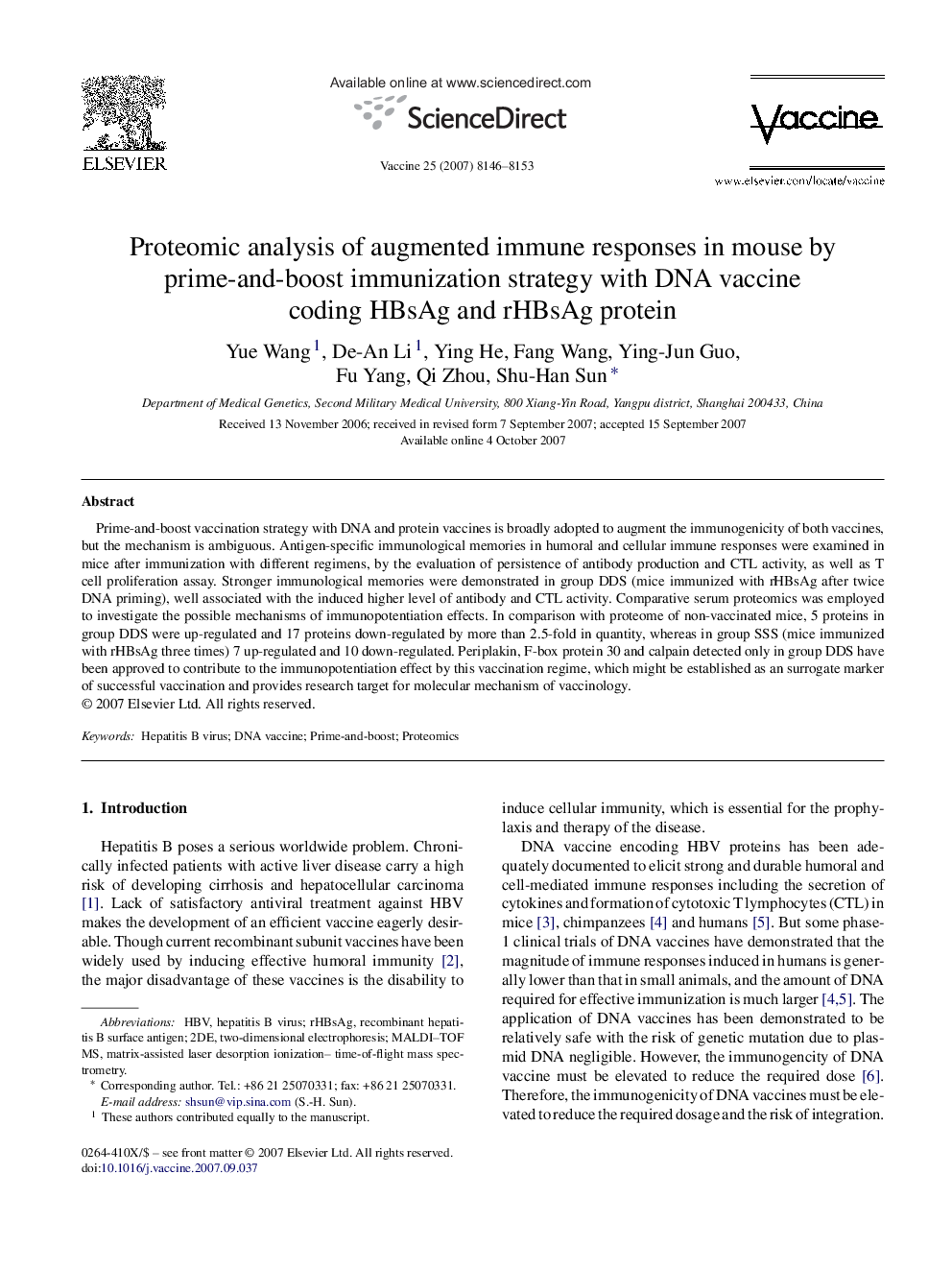| کد مقاله | کد نشریه | سال انتشار | مقاله انگلیسی | نسخه تمام متن |
|---|---|---|---|---|
| 10970506 | 1103187 | 2007 | 8 صفحه PDF | دانلود رایگان |
عنوان انگلیسی مقاله ISI
Proteomic analysis of augmented immune responses in mouse by prime-and-boost immunization strategy with DNA vaccine coding HBsAg and rHBsAg protein
دانلود مقاله + سفارش ترجمه
دانلود مقاله ISI انگلیسی
رایگان برای ایرانیان
کلمات کلیدی
موضوعات مرتبط
علوم زیستی و بیوفناوری
ایمنی شناسی و میکروب شناسی
ایمونولوژی
پیش نمایش صفحه اول مقاله

چکیده انگلیسی
Prime-and-boost vaccination strategy with DNA and protein vaccines is broadly adopted to augment the immunogenicity of both vaccines, but the mechanism is ambiguous. Antigen-specific immunological memories in humoral and cellular immune responses were examined in mice after immunization with different regimens, by the evaluation of persistence of antibody production and CTL activity, as well as T cell proliferation assay. Stronger immunological memories were demonstrated in group DDS (mice immunized with rHBsAg after twice DNA priming), well associated with the induced higher level of antibody and CTL activity. Comparative serum proteomics was employed to investigate the possible mechanisms of immunopotentiation effects. In comparison with proteome of non-vaccinated mice, 5 proteins in group DDS were up-regulated and 17 proteins down-regulated by more than 2.5-fold in quantity, whereas in group SSS (mice immunized with rHBsAg three times) 7 up-regulated and 10 down-regulated. Periplakin, F-box protein 30 and calpain detected only in group DDS have been approved to contribute to the immunopotentiation effect by this vaccination regime, which might be established as an surrogate marker of successful vaccination and provides research target for molecular mechanism of vaccinology.
ناشر
Database: Elsevier - ScienceDirect (ساینس دایرکت)
Journal: Vaccine - Volume 25, Issue 48, 23 November 2007, Pages 8146-8153
Journal: Vaccine - Volume 25, Issue 48, 23 November 2007, Pages 8146-8153
نویسندگان
Yue Wang, De-An Li, Ying He, Fang Wang, Ying-Jun Guo, Fu Yang, Qi Zhou, Shu-Han Sun,